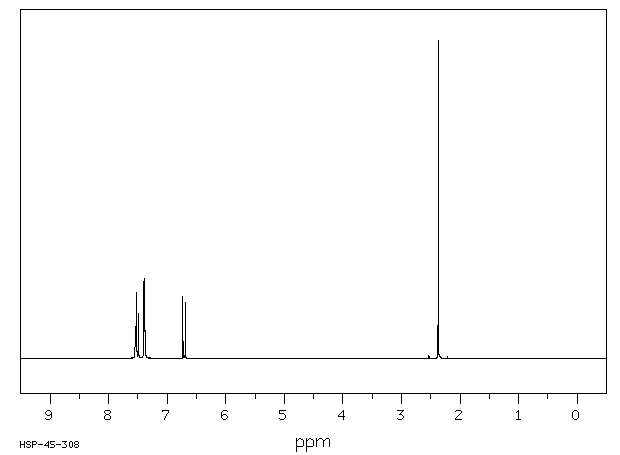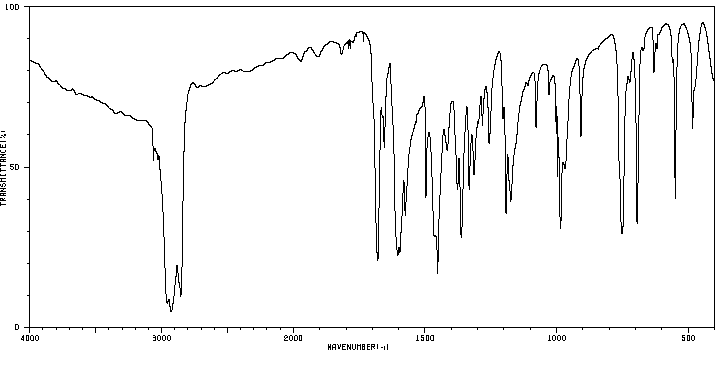| Name: | trans-4-Phenyl-3-buten-2-one p.a. Material Safety Data Sheet |
| Synonym: | trans-Benzalacetone; trans-Benzylideneacetone; 3-Buten-2-one, 4-phenyl-, (E)-; Methyl trans-styryl ketone; TPBO; trans-4-Phenylbut-3-en-2-on |
| CAS: | 1896-62-4 |
Section 1 - Chemical Product MSDS Name:trans-4-Phenyl-3-buten-2-one p.a. Material Safety Data Sheet
Synonym:trans-Benzalacetone; trans-Benzylideneacetone; 3-Buten-2-one, 4-phenyl-, (E)-; Methyl trans-styryl ketone; TPBO; trans-4-Phenylbut-3-en-2-on
Section 2 - COMPOSITION, INFORMATION ON INGREDIENTS | CAS# | Chemical Name | content | EINECS# |
| 1896-62-4 | trans-4-Phenyl-3-buten-2-one | >99.0 | 217-587-6 |
Hazard Symbols: XI
Risk Phrases: 36/37/38
Section 3 - HAZARDS IDENTIFICATION EMERGENCY OVERVIEW
Irritating to eyes, respiratory system and skin.Light sensitive.
Potential Health Effects
Eye:
Causes eye irritation. May cause chemical conjunctivitis.
Skin:
Causes skin irritation.
Ingestion:
May cause gastrointestinal irritation with nausea, vomiting and diarrhea.
Inhalation:
Causes respiratory tract irritation. Can produce delayed pulmonary edema.
Chronic:
Effects may be delayed.
Section 4 - FIRST AID MEASURES Eyes: Immediately flush eyes with plenty of water for at least 15 minutes, occasionally lifting the upper and lower eyelids. Get medical aid.
Skin:
Get medical aid. Flush skin with plenty of water for at least 15 minutes while removing contaminated clothing and shoes. Wash clothing before reuse.
Ingestion:
Never give anything by mouth to an unconscious person. Get medical aid. Do NOT induce vomiting. If conscious and alert, rinse mouth and drink 2-4 cupfuls of milk or water.
Inhalation:
Remove from exposure and move to fresh air immediately. If not breathing, give artificial respiration. If breathing is difficult, give oxygen. Get medical aid. Do NOT use mouth-to-mouth resuscitation.
Notes to Physician:
Treat symptomatically and supportively.
Section 5 - FIRE FIGHTING MEASURES General Information:
As in any fire, wear a self-contained breathing apparatus in pressure-demand, MSHA/NIOSH (approved or equivalent), and full protective gear. During a fire, irritating and highly toxic gases may be generated by thermal decomposition or combustion.
Extinguishing Media:
Use water spray, dry chemical, carbon dioxide, or appropriate foam.
Section 6 - ACCIDENTAL RELEASE MEASURES General Information: Use proper personal protective equipment as indicated in Section 8.
Spills/Leaks:
Absorb spill with inert material (e.g. vermiculite, sand or earth), then place in suitable container. Avoid generating dusty conditions.
Provide ventilation.
Section 7 - HANDLING and STORAGE Handling:
Remove contaminated clothing and wash before reuse. Avoid contact with eyes, skin, and clothing. Avoid ingestion and inhalation. Store protected from light. Use only in a chemical fume hood. Wash clothing before reuse.
Storage:
Store in a tightly closed container. Store in a cool, dry, well-ventilated area away from incompatible substances. Store protected from light.
Section 8 - EXPOSURE CONTROLS, PERSONAL PROTECTION Engineering Controls:
Facilities storing or utilizing this material should be equipped with an eyewash facility and a safety shower. Use adequate ventilation to keep airborne concentrations low.
Exposure Limits CAS# 1896-62-4: Personal Protective Equipment Eyes: Wear appropriate protective eyeglasses or chemical safety goggles as described by OSHA's eye and face protection regulations in 29 CFR 1910.133 or European Standard EN166.
Skin:
Wear appropriate protective gloves to prevent skin exposure.
Clothing:
Wear appropriate protective clothing to prevent skin exposure.
Respirators:
A respiratory protection program that meets OSHA's 29 CFR 1910.134 and ANSI Z88.2 requirements or European Standard EN 149 must be followed whenever workplace conditions warrant respirator use.
Section 9 - PHYSICAL AND CHEMICAL PROPERTIES Physical State: Crystals
Color: yellowish
Odor: coumarin
pH: Not available.
Vapor Pressure: 0.009 mmHg @ 25
Viscosity: Not available.
Boiling Point: 260 - 262 deg C @ 7
Freezing/Melting Point: 39.8 deg C
Autoignition Temperature: Not applicable.
Flash Point: 122 deg C ( 251.60 deg F)
Explosion Limits, lower: Not available.
Explosion Limits, upper: Not available.
Decomposition Temperature: Not available.
Solubility in water: Negligible.
Specific Gravity/Density: Not available.
Molecular Formula: C6H5CH=CHCOCH3
Molecular Weight: 146.19
Section 10 - STABILITY AND REACTIVITY Chemical Stability:
Stable at room temperature in closed containers under normal storage and handling conditions. May discolor on exposure to light.
Conditions to Avoid:
Incompatible materials, light, dust generation, excess heat.
Incompatibilities with Other Materials:
Direct light, strong oxidizing agents.
Hazardous Decomposition Products:
Carbon monoxide, irritating and toxic fumes and gases, carbon dioxide.
Hazardous Polymerization: Has not been reported.
Section 11 - TOXICOLOGICAL INFORMATION RTECS#:
CAS# 1896-62-4: EN0330050 LD50/LC50:
Not available.
Carcinogenicity:
trans-4-Phenyl-3-buten-2-one - Not listed by ACGIH, IARC, or NTP.
Other:
See actual entry in RTECS for complete information.
Section 12 - ECOLOGICAL INFORMATION
Section 13 - DISPOSAL CONSIDERATIONS Dispose of in a manner consistent with federal, state, and local regulations.
Section 14 - TRANSPORT INFORMATION IATA
Not regulated as a hazardous material.
IMO
Not regulated as a hazardous material.
RID/ADR
Not regulated as a hazardous material.
Section 15 - REGULATORY INFORMATION European/International Regulations
European Labeling in Accordance with EC Directives
Hazard Symbols: XI
Risk Phrases:
R 36/37/38 Irritating to eyes, respiratory system
and skin.
Safety Phrases:
S 26 In case of contact with eyes, rinse immediately
with plenty of water and seek medical advice.
S 37/39 Wear suitable gloves and eye/face
protection.
WGK (Water Danger/Protection)
CAS# 1896-62-4: No information available.
Canada
None of the chemicals in this product are listed on the DSL/NDSL list.
CAS# 1896-62-4 is not listed on Canada's Ingredient Disclosure List.
US FEDERAL
TSCA
CAS# 1896-62-4 is not listed on the TSCA inventory.
It is for research and development use only.
SECTION 16 - ADDITIONAL INFORMATION N/A











